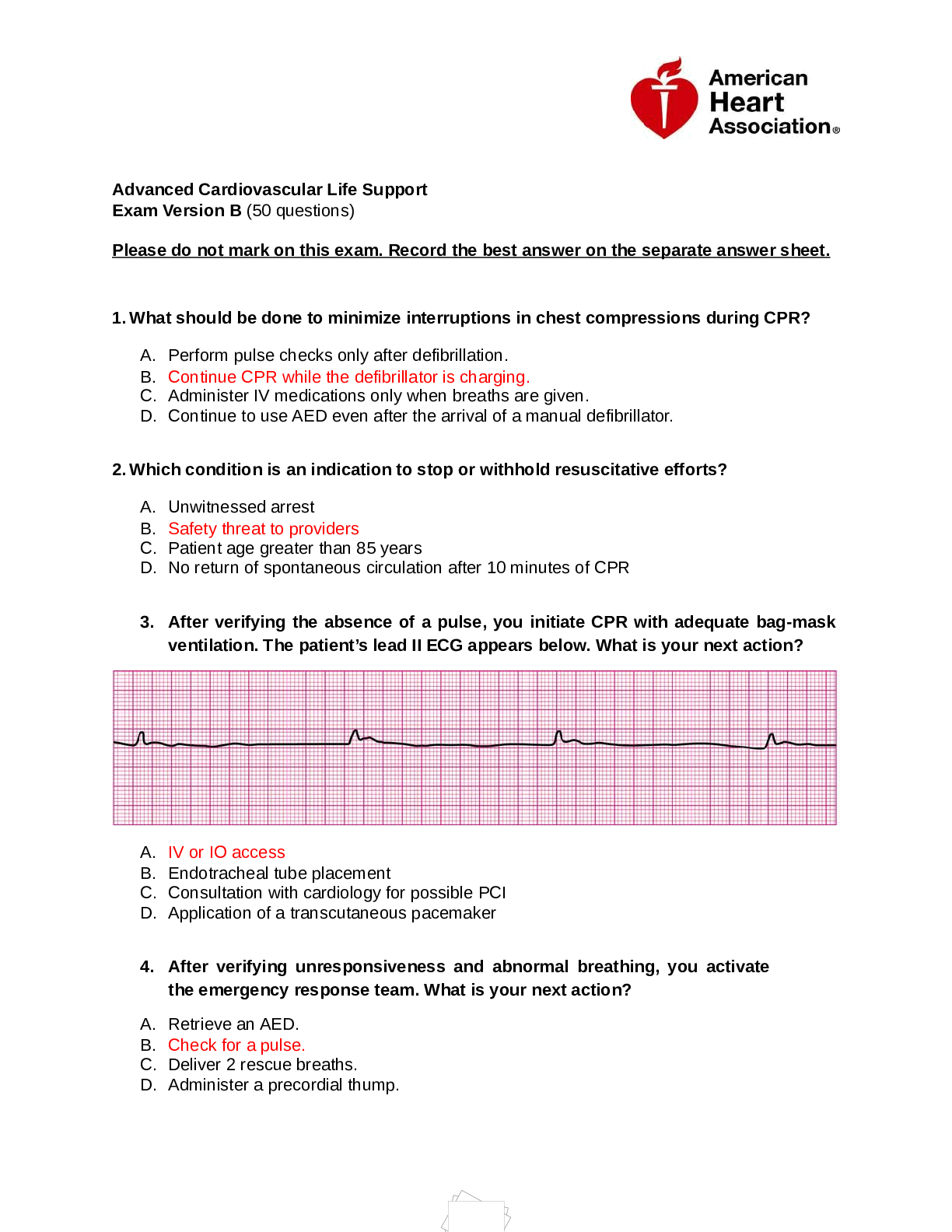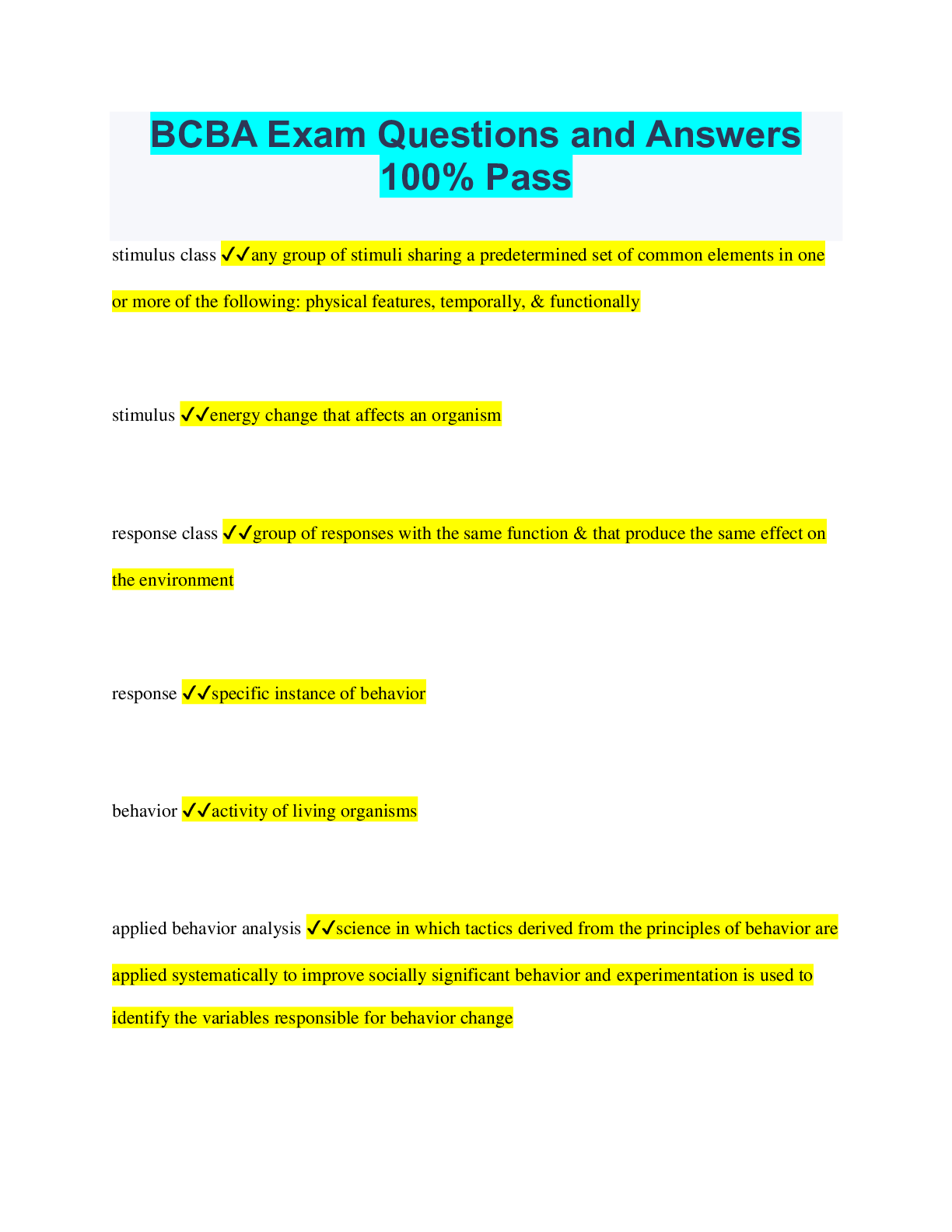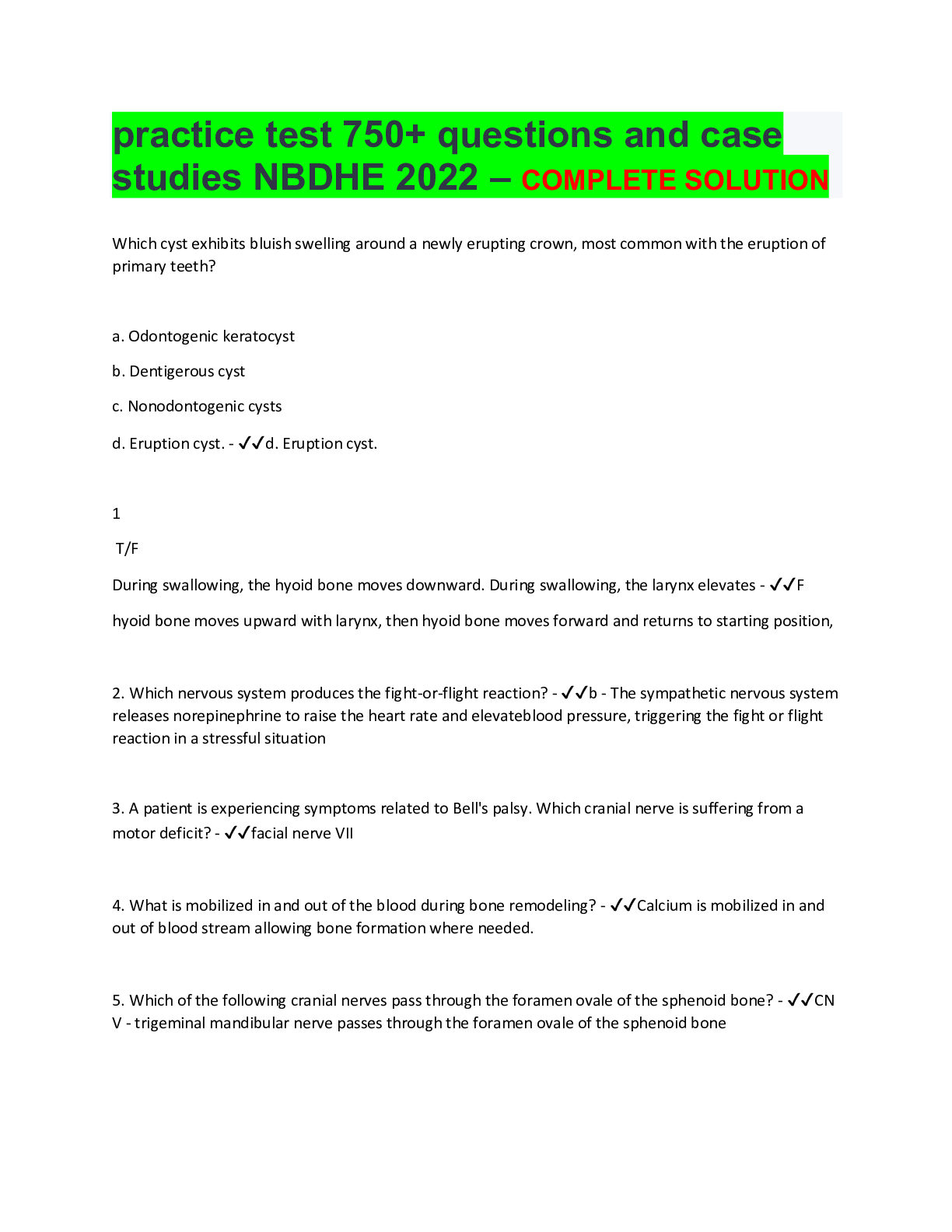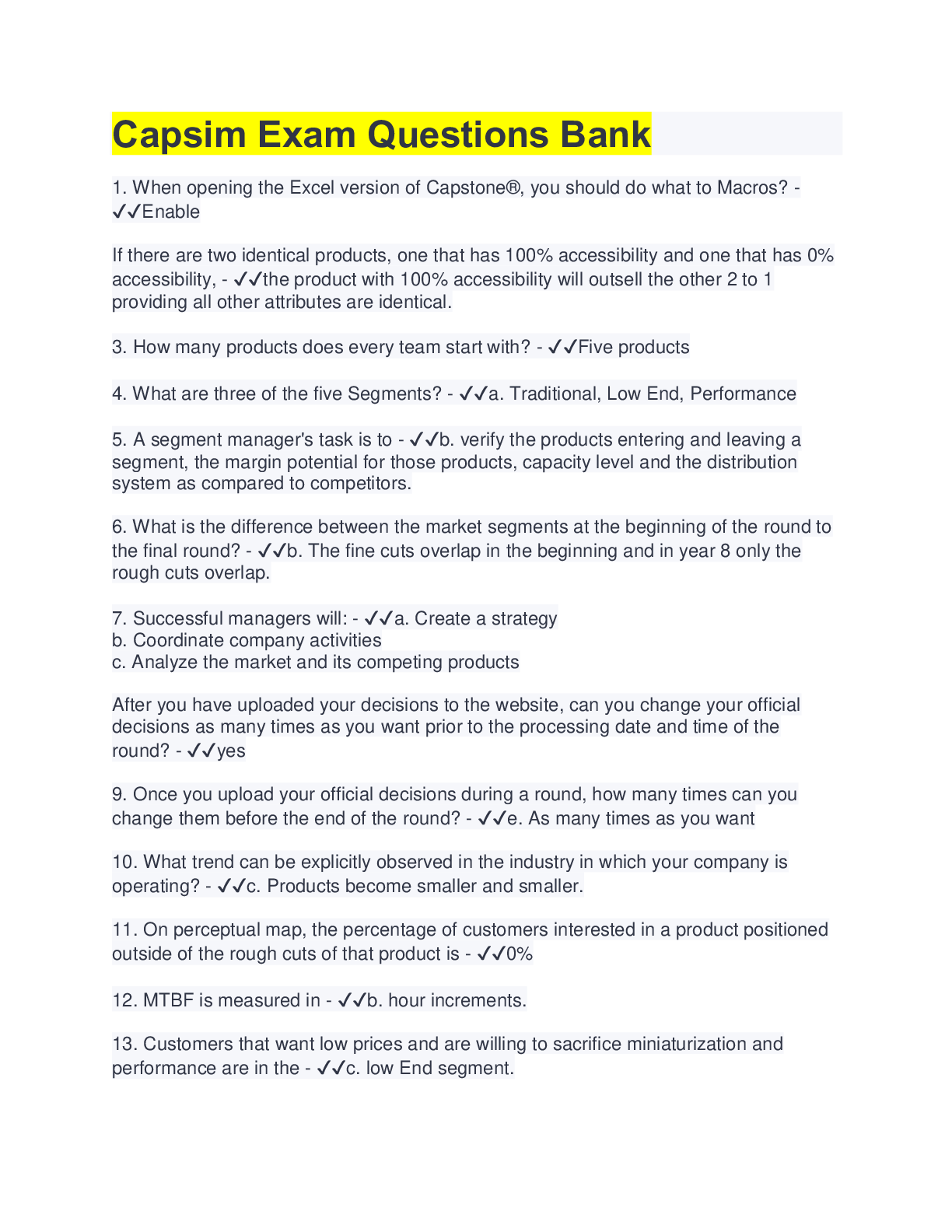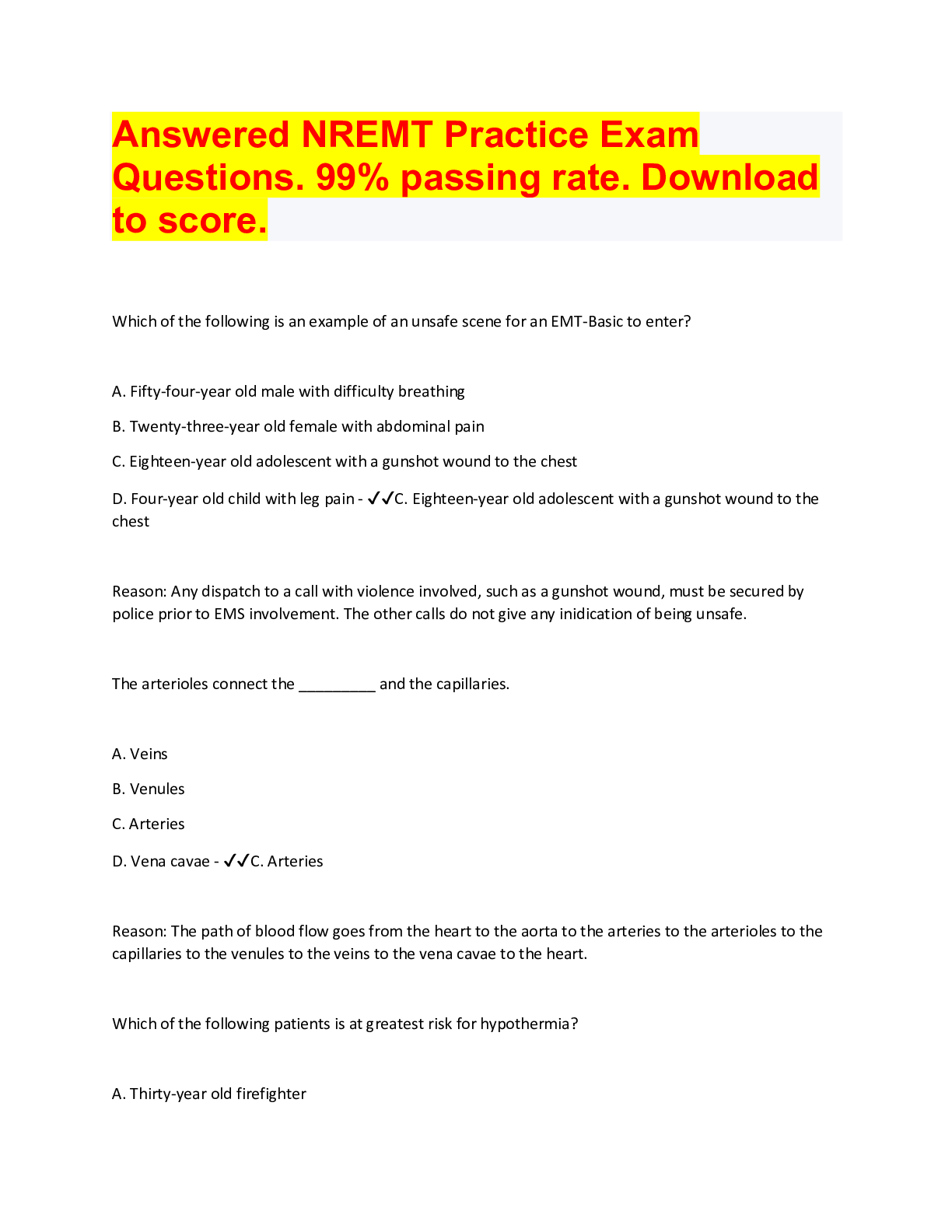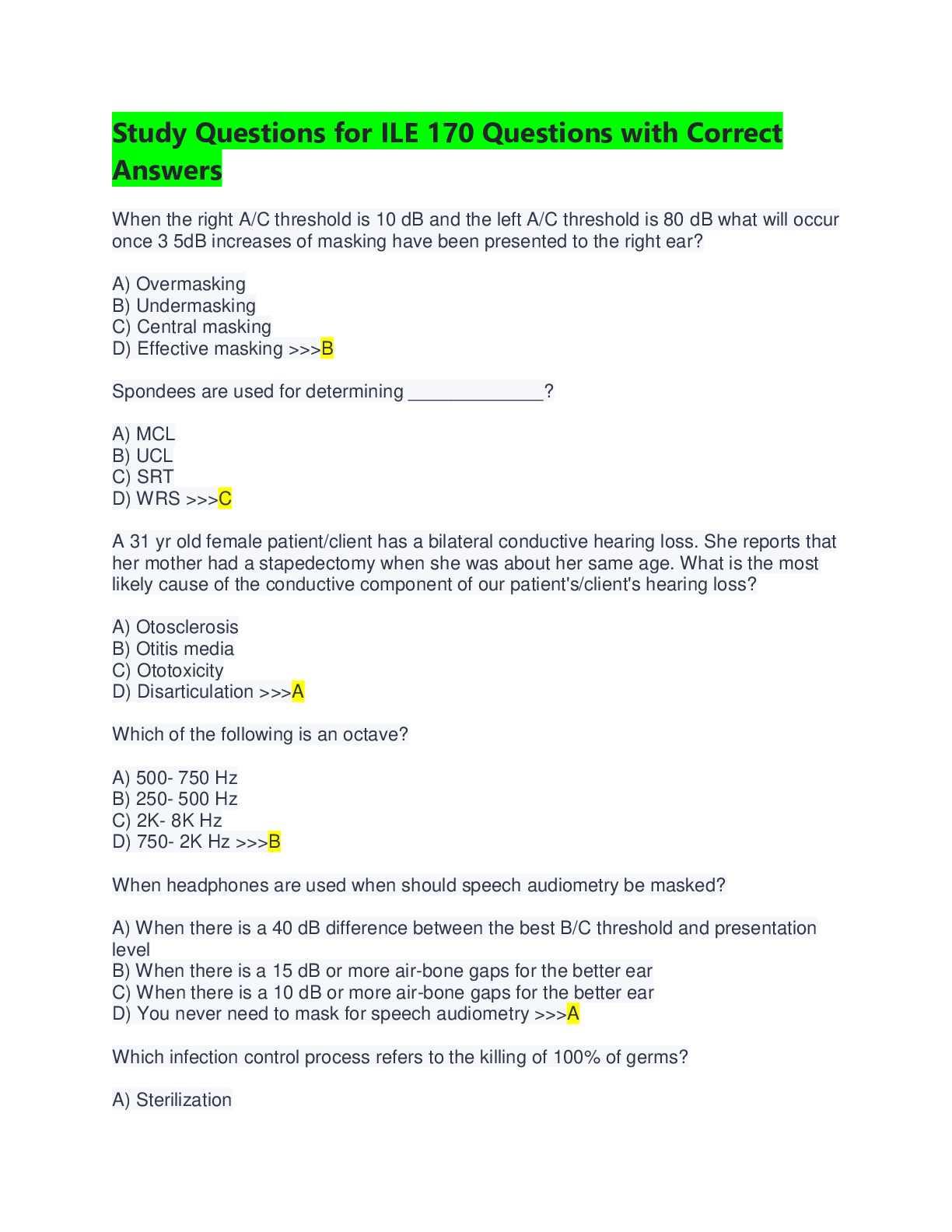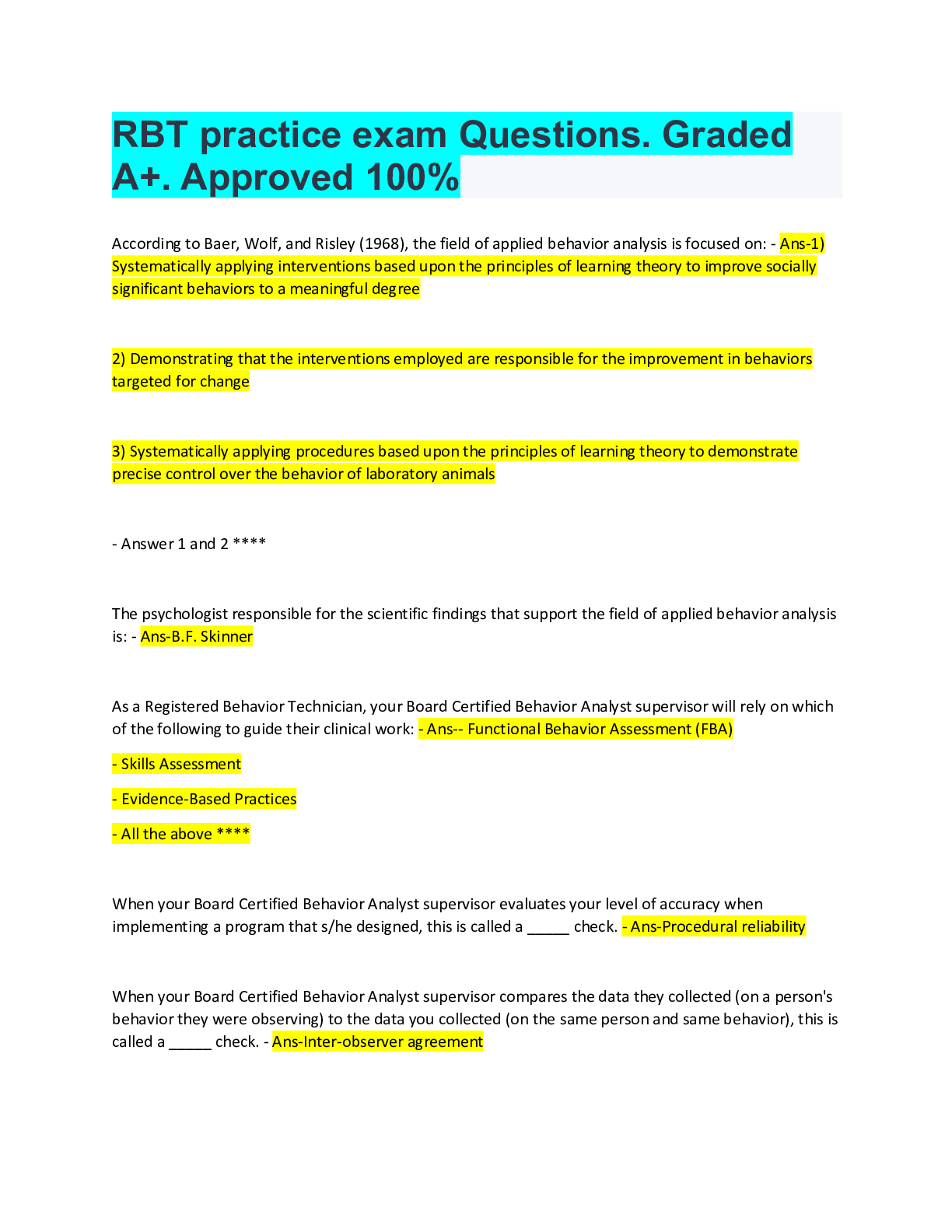Sociology > QUESTIONS & ANSWERS > ASWB Complete Practice Exam Questions. 170 Questions with Rationale Answers (All)
ASWB Complete Practice Exam Questions. 170 Questions with Rationale Answers
Document Content and Description Below
ASWB Complete Practice Exam Questions. 170 Questions with Rationale Answers 1. Which of the following is NOT true about motivation to change? A. Motivation fluctuates from one time to another. B.... Motivation can be increased by working to remove barriers to change. C. Motivation is driven by hope or the belief that life can be different. D. Motivation that is imposed by external forces is more salient than that which is intrinsic. - Ans-D Motivation is a state of readiness or eagerness to change, which fluctuates from one time to another. The role of the social worker is to create an atmosphere that is conducive to change and to increase a client's intrinsic motivation, so that change arises from within rather than being imposed from without. If a client is driven to change internally, it is much more likely that the change effort will be sustained. A technique to increase motivation is to work to remove barriers and instill hope or the belief that life can be different. 2. Evidence-based social work practice can BEST be defined as: A. Interventions that a social worker has gained training and experience in delivering B. Treatment that yields the most cost-effective outcomes according to a cost-benefit analysis C. Decision making based on the conscientious, explicit, and judicious use of research knowledge, clinical expertise, social work values, and client wishes D. Practice evaluations that adhere to scientific principles - Ans-C Evidence-based practice (EBP) combines well-researched interventions with clinical experience and ethics, as well as client preferences and culture, to guide and inform the delivery of treatments and services. Social workers, clients, and others must work together in order to identify what works, for whom, and under what conditions. This approach ensures that the treatments and services, when used as intended, will have the most effective outcomes as demonstrated by the research. 3. What are the stages of change in sequential order? A. Precontemplation, preparation, contemplation, action, maintenance, and relapse B. Preparation, action, precontemplation, contemplation, maintenance, and relapse C. Preparation, precontemplation, contemplation, action, maintenance, and relapse D. Precontemplation, contemplation, preparation, action, maintenance, and relapse - Ans-D Precontemplation is denial or ignorance of the problem. It is followed by contemplation in which there is ambivalence about making change. Then comes preparation or experimenting with small changes. Action moves toward achieving a goal, whereas maintenance sustains a new behavior and avoids relapse, which can lead to feelings of frustration and failure. 4. Which of the following is NOT an essential step in ethical problem solving? A. Identifying the ethical standards that may be compromised B. Determining whether there is an ethical dilemma C. Weighing ethical issues in light of social work values and principles D. Asking a supervisor to monitor practice to identify new ethical issues or dilemmas - Ans-D A social worker, not his or her supervisor, should monitor practice to identify whether new issues or dilemmas arise. 5. A young boy is stopped by a police officer and claims that he is a member of the armed forces, though it is obvious that he is not. This assertion by the boy is MOST likely a: A. Comorbid thought B. Dissociation C. Folie à deux D. Delusion - Ans-D A delusion is a false, fixed belief despite evidence to the contrary (i.e., believing something that is not true). Comorbid means existing at the same time. Dissociation is a change in memory, perception, or consciousness. Folie à deux is a shared delusion. 6. A social work administrator is having trouble finding a group home manager for a new program scheduled to open in 2 weeks. Further delays in locating staff will delay clients from moving into the program. The administrator temporarily hires her niece, who just graduated with a social work degree, for this position. This action is: A. Ethical because the niece is clearly qualified for the position B. Unethical because this is a conflict of interest C. Ethical because the position is temporary and ensures clients get the services needed D. Unethical because clients will experience staff turnover when a new manager is hired - Ans-B Social workers should avoid situations interfering with impartial judgment. Hiring a family member creates a dual relationship and should be avoided. [Show More]
Last updated: 1 year ago
Preview 1 out of 66 pages

Reviews( 0 )
Document information
Connected school, study & course
About the document
Uploaded On
Jun 18, 2022
Number of pages
66
Written in
Additional information
This document has been written for:
Uploaded
Jun 18, 2022
Downloads
0
Views
71

.png)
.png)
.png)
.png)
.png)
.png)


